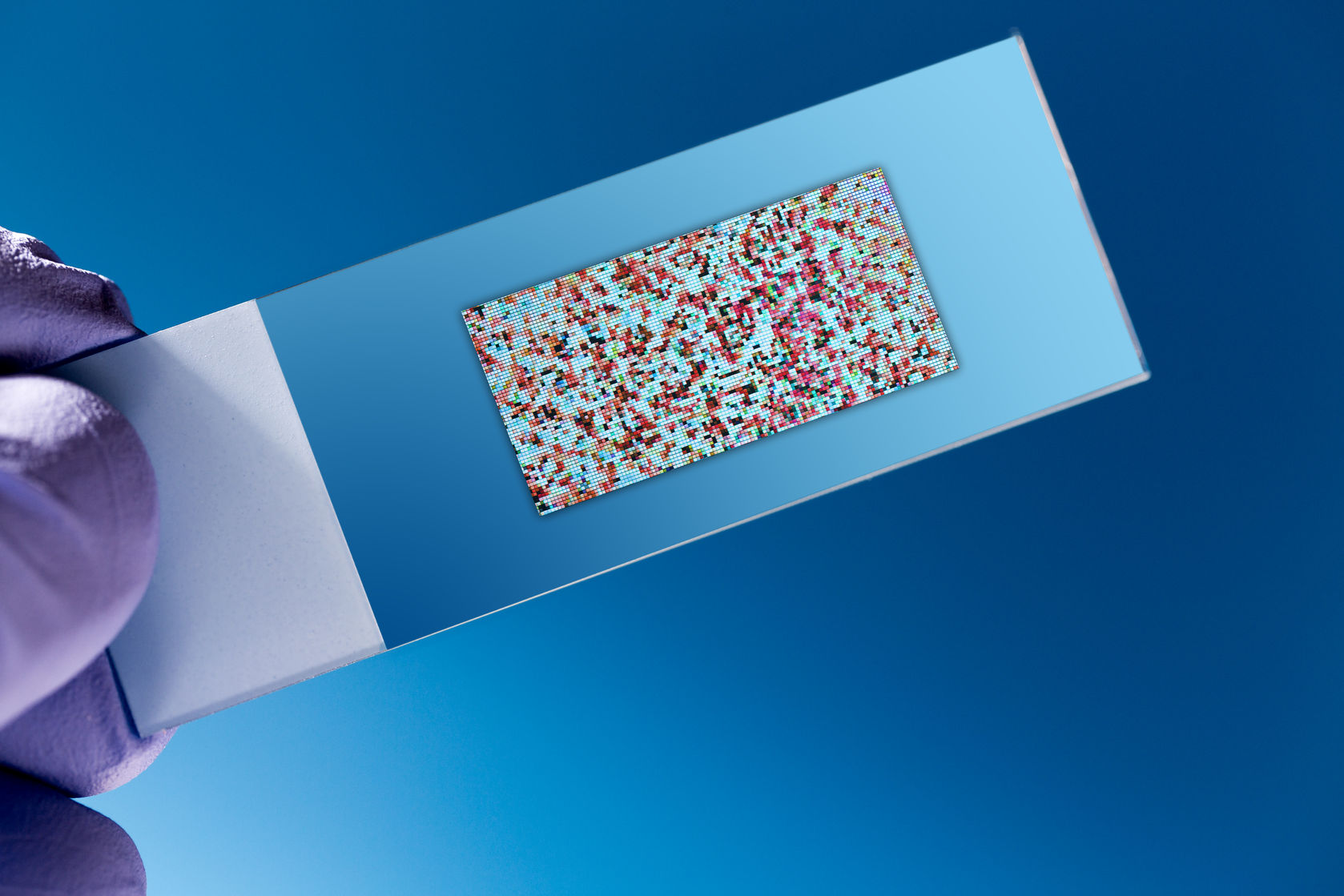Analysis of Gene Expression Profiles
Analysis of gene expression profiles by microarray allows simultaneous evaluation of the expression of thousands of genes in a biological sample. The principle on which it is based is that of hybridization between labeled cRNAs and thousands of specific oligonucleotides linked to a glass support. The evaluation of gene expression profiles can be used in various applications, such as:
- Characterization of diagnostic markers
- Molecular classification of different subtypes of disease
- Identification of specific therapeutic targets
- Identification of signal pathways regulated by key genes
- Drug discovery and toxicological studies
Microgem Lab provides the one or two-color “Analysis of Gene Expression Profiles” service, extended genome coverage with high density microarrays, high sensitivity even for low expression levels, high accuracy. Possibility to analyze transcripts extracted from tissues and cells of a wide variety of organisms and species.
Workflow of “Analysis of one/two-color gene expression profiles” service
- Consultancy – A free consultation will be provided for project optimization (number of samples to be analyzed, methodology, costs). During the consultation phase, advice will be provided on the extraction method to be taken. Alternatively, you can take advantage of our RNA isolation service.
- Sample Requirements –
- 5 ug of total RNA, from tissues or cells, of human, mouse, rat, at concentration over 100 ng/ul
- 50 ng of polyA RNA at concentration over 25 ng/ul
- RNA samples must undergo to DNase I treatment
- RNA samples are required to have an OD 260/280 ratio between 1.8-2.0 and 260/230 ratio ≥7
Please supply a shot of 1.5 % denaturating agarose gel.
- Sample Quality Control (QC) - After receiving RNA samples, our researchers will evaluate the integrity and purity of each sample by MaestroNano microvolume reader and Bioanalyzer. Possible contamination for each sample will also be assessed. The results of this analysis will be sent to the researcher before proceeding with the next steps of the service.
- Labeling, Hybridization and Reading of the Microarray – RNA samples (control and experimental) will be used for the production of labeled cRNA. In the one-color procedure, all samples will be labeled with Cyanine3-CTP and hybridized on specific microarray. In the two-colors procedure the control and experimental samples will be labeled with Cyanine3-CTP and Cyanine5-CTP respectively and co-hybridized on specific microarray. For workflow monitoring, Spike-In (mix derived from in vitro synthesized E1A adenovirus transcripts) in each sample will be entered during the labeling procedure and a specific RNA reference will be used in a parallel experiment. On each microarray, negative and positive controls are also detected for auto track and cross hybridization. After washing, the microarray will be analyzed by laser scanner and the fluorescence image will be digitized.
- Data Analysis – Data quality analysis based on Spike-In controls, spot intensity and flagged spots. Data normalization will be performed on data obtained on the same microarray and independent microarrays and a Principal Component Analysis (PCA) to identify variations related to the biological sample or technical reasons. A Heat Map diagram will allow to view the data.
- Statistical Data Analysis – Next, a statistical analysis of the data for the determination of differently expressed genes (T-test, Anova, Volcano Plot for determination of p-values with or without correction, MA and Box plot) will be performed. A clustering analysis will allow to group genes with a high degree of similarity. In addition, analysis of cell pathways will be performed, including genes differentially expressed.
- Final Report – At the end of the project, a final report will be provided including the results of the various stages of project development. The results presented in the report can be discussed with the Microgem scientific team.
